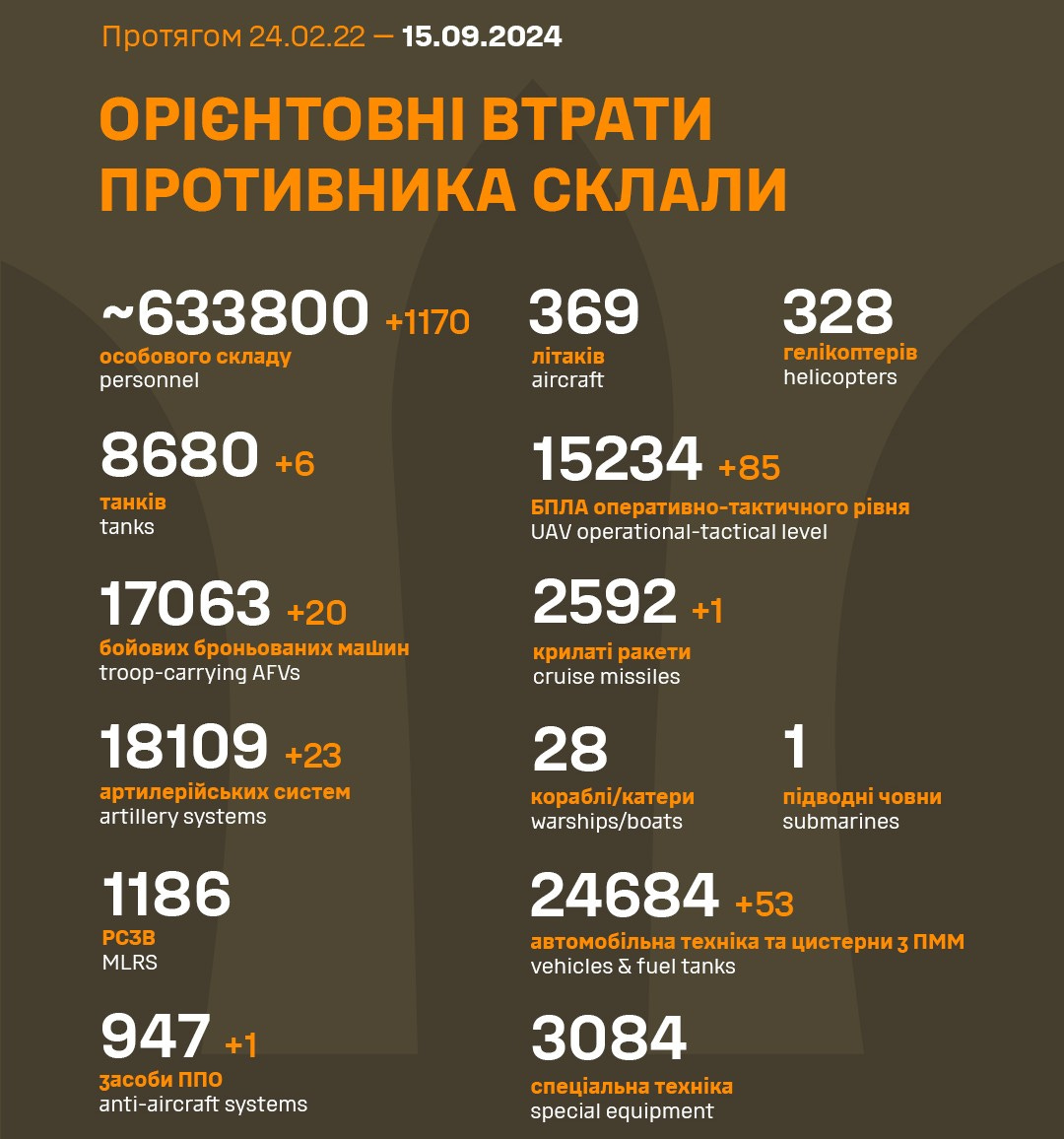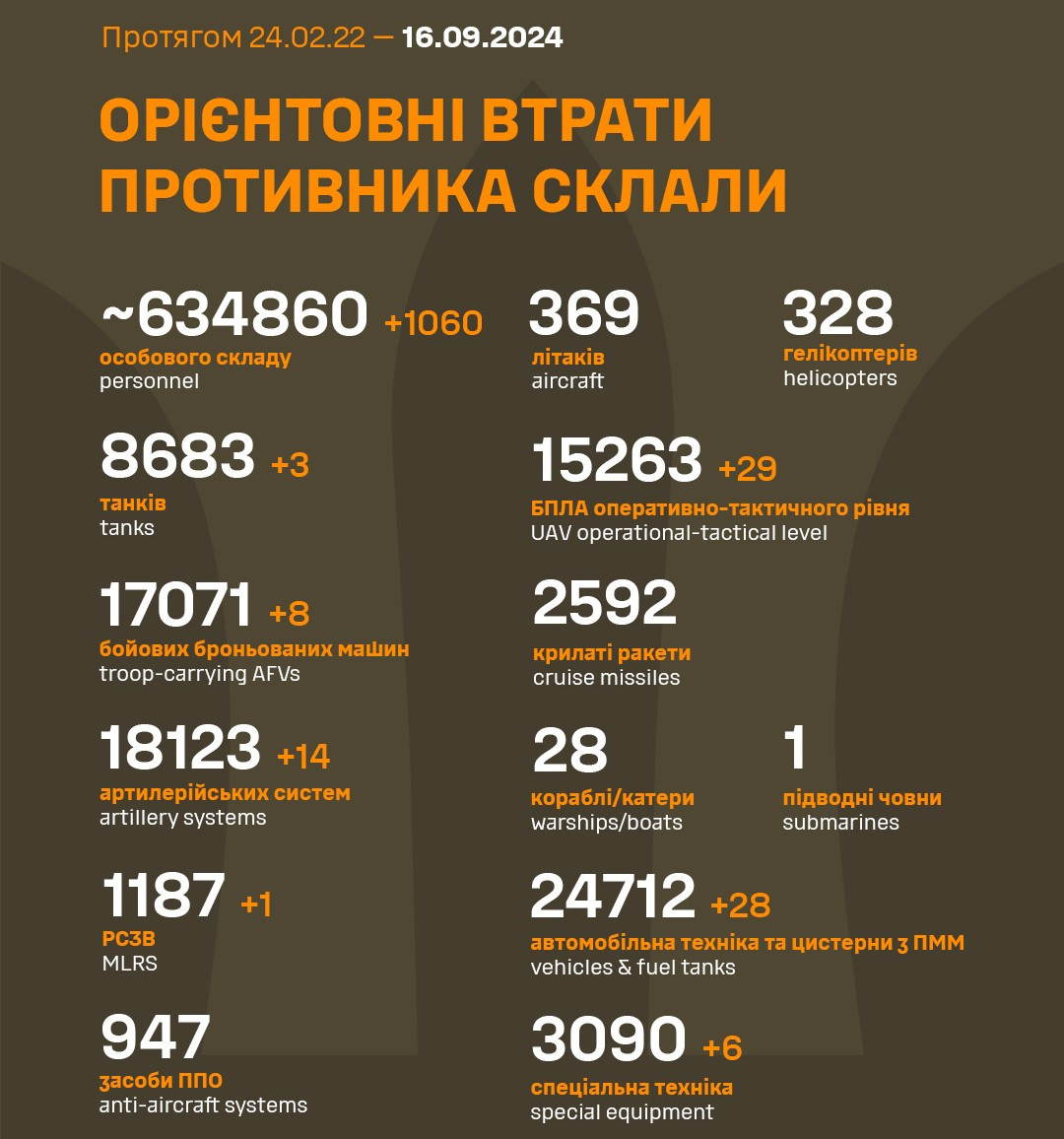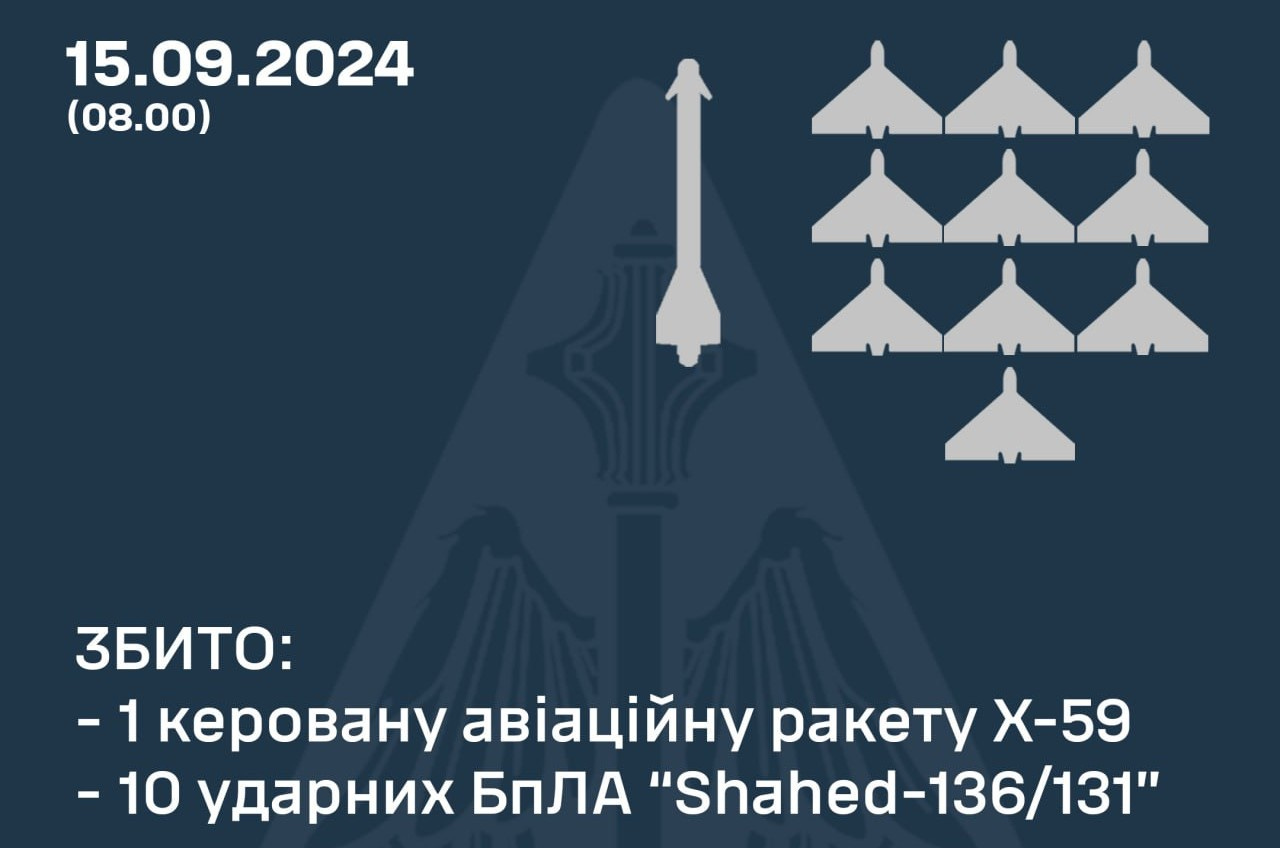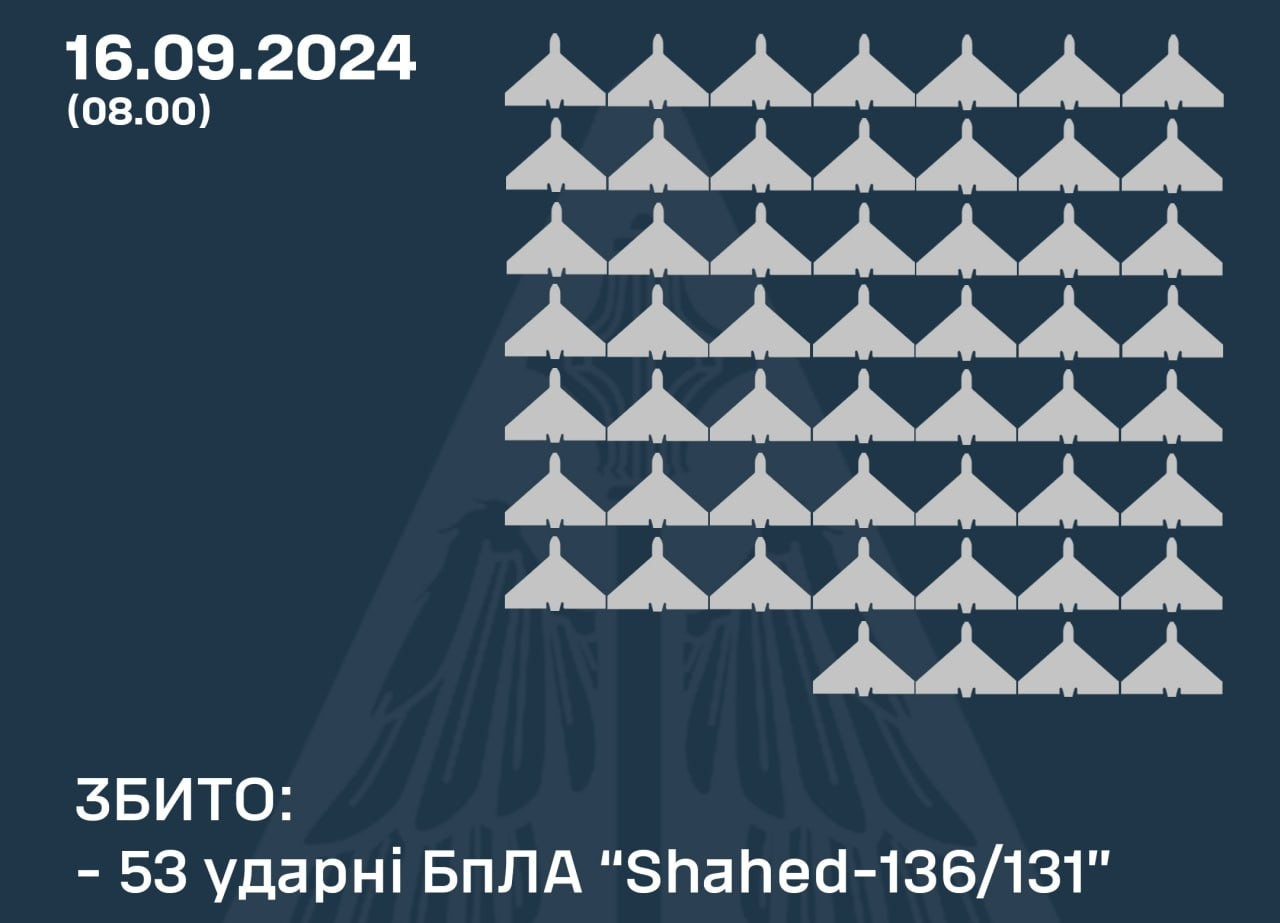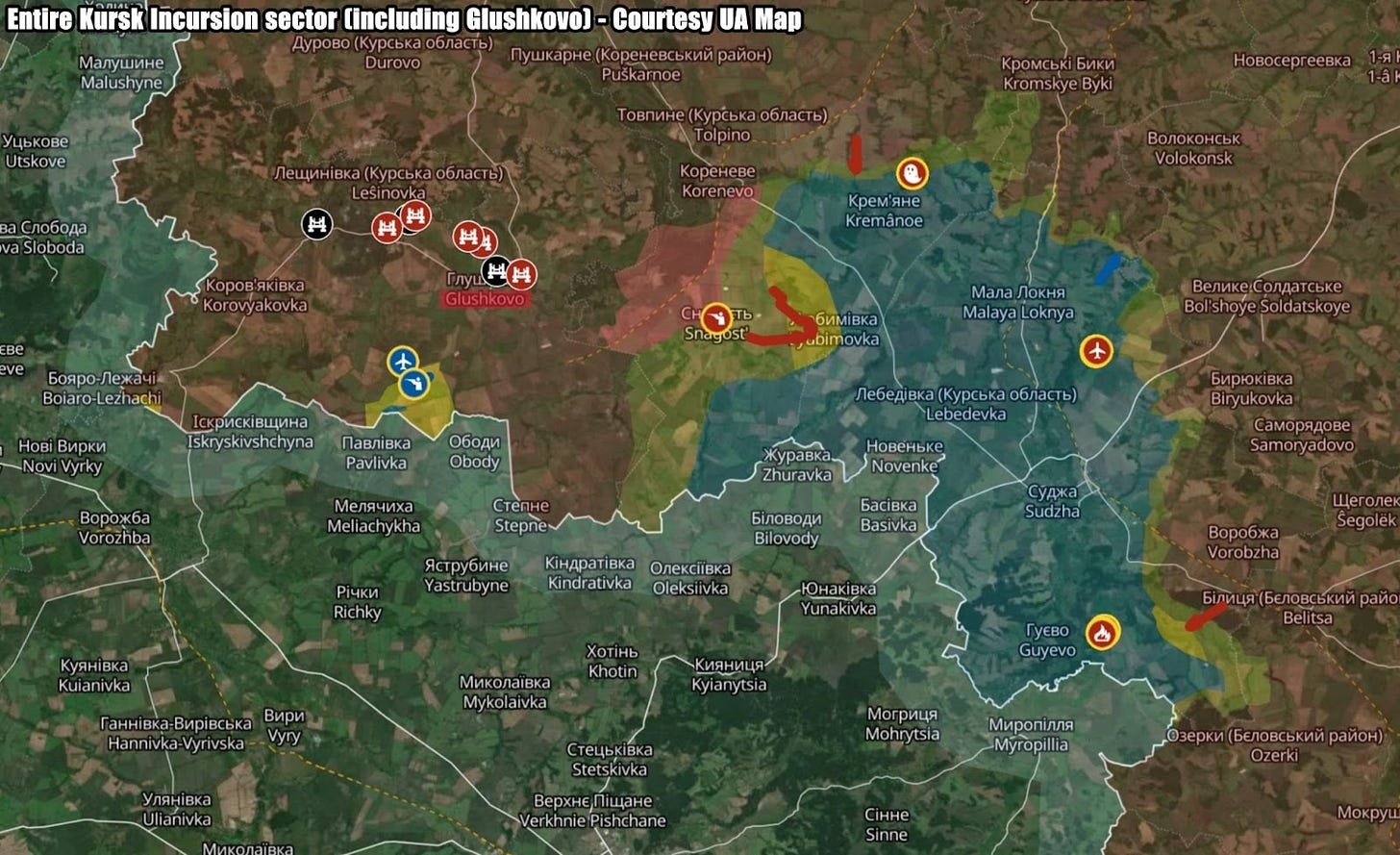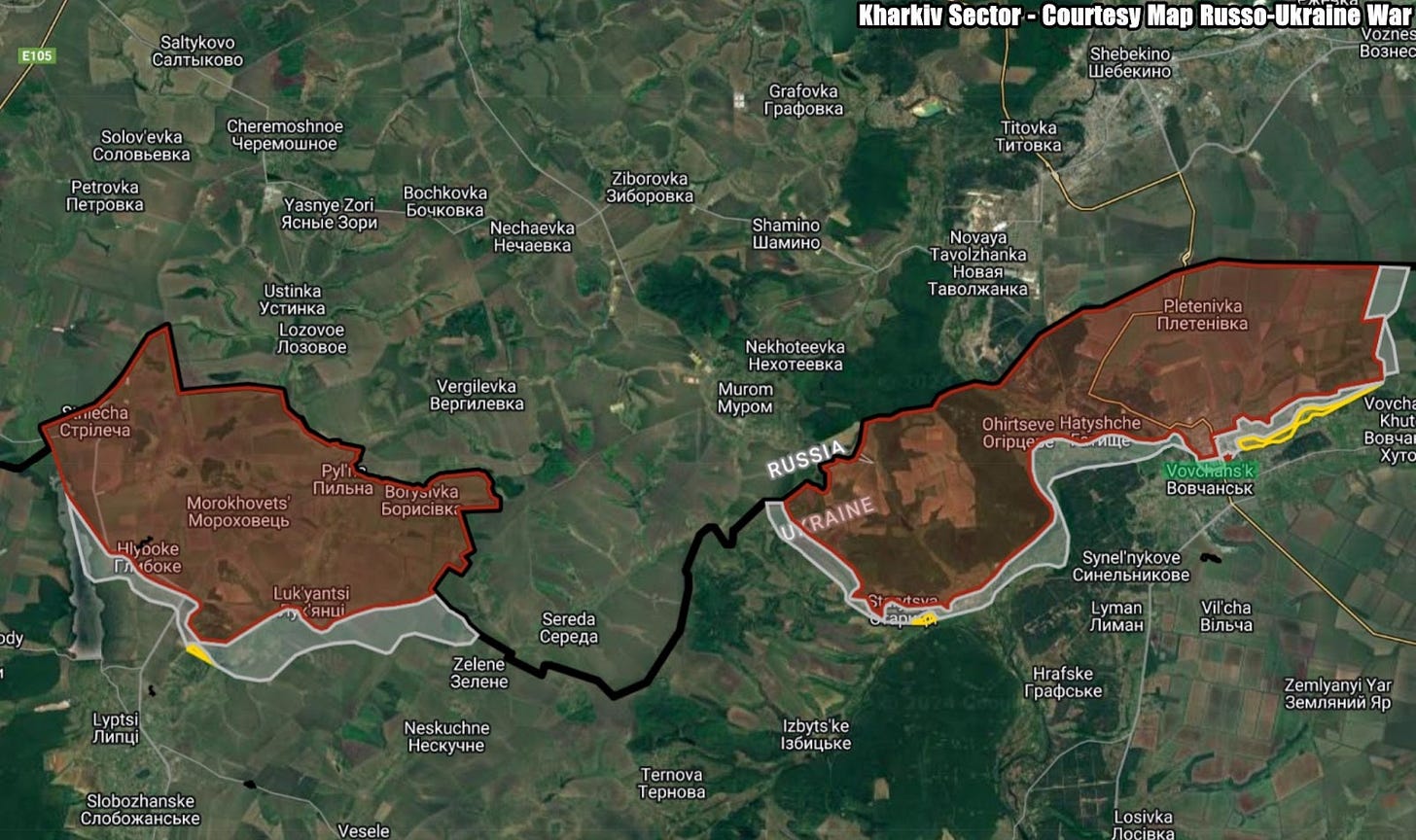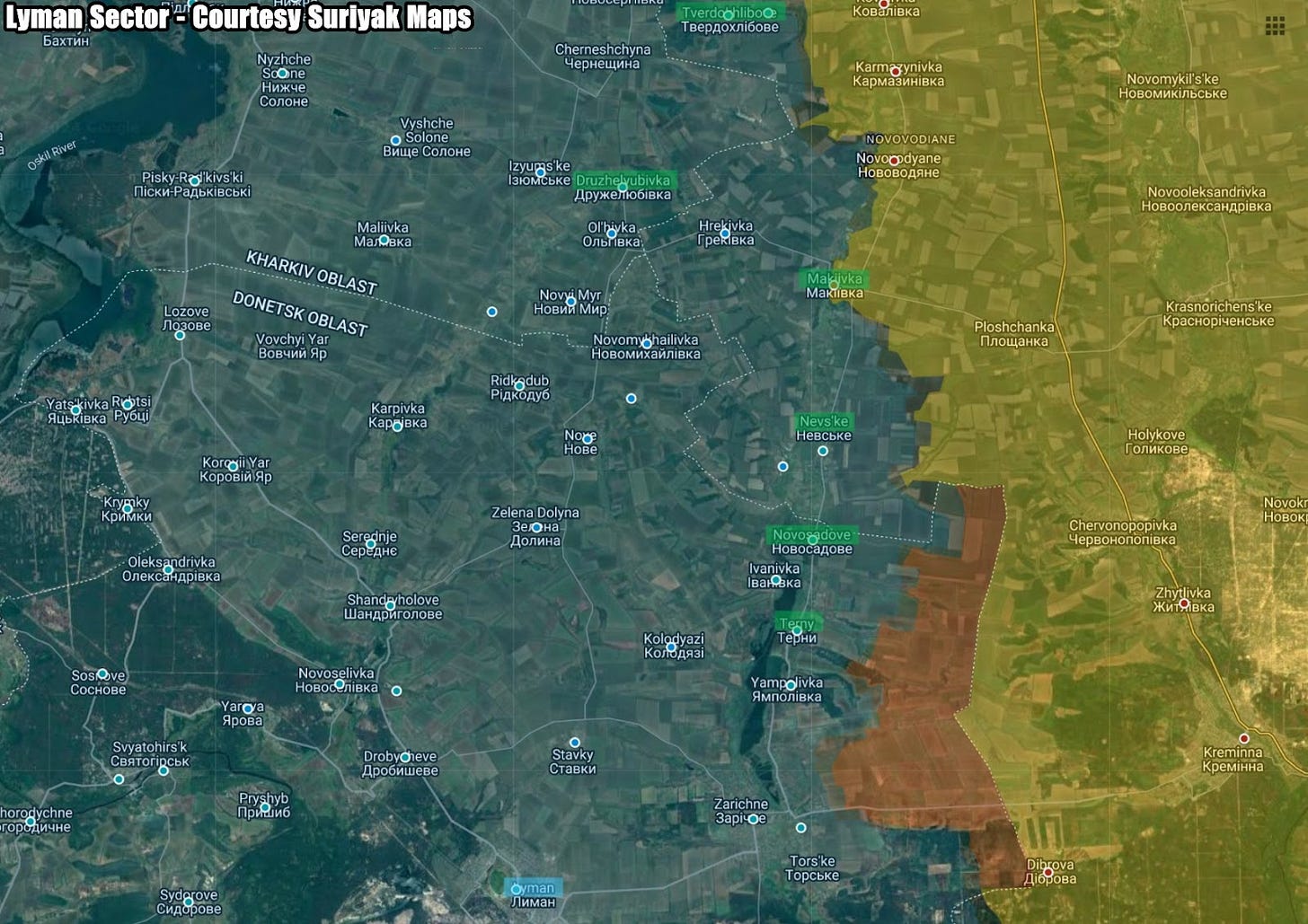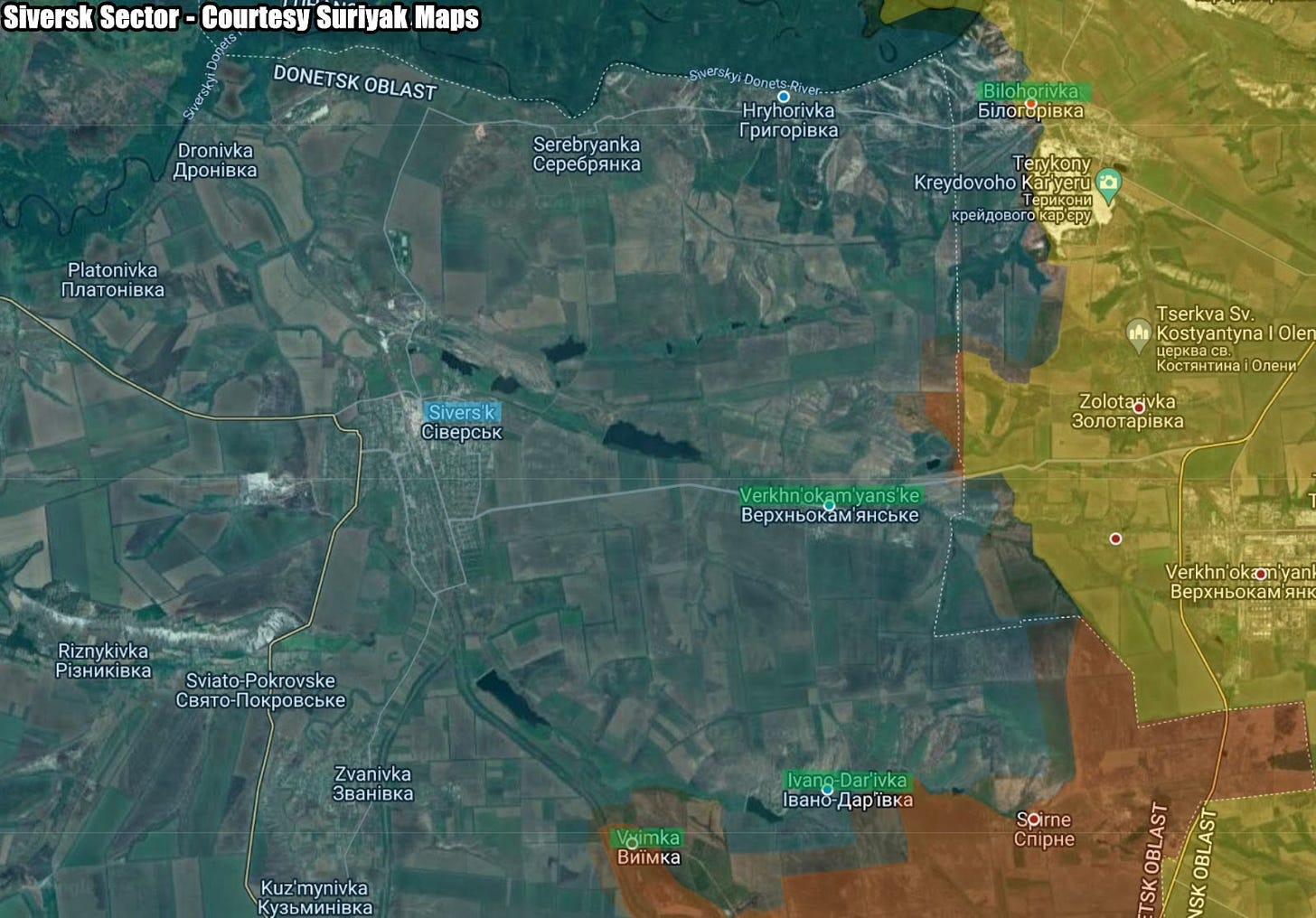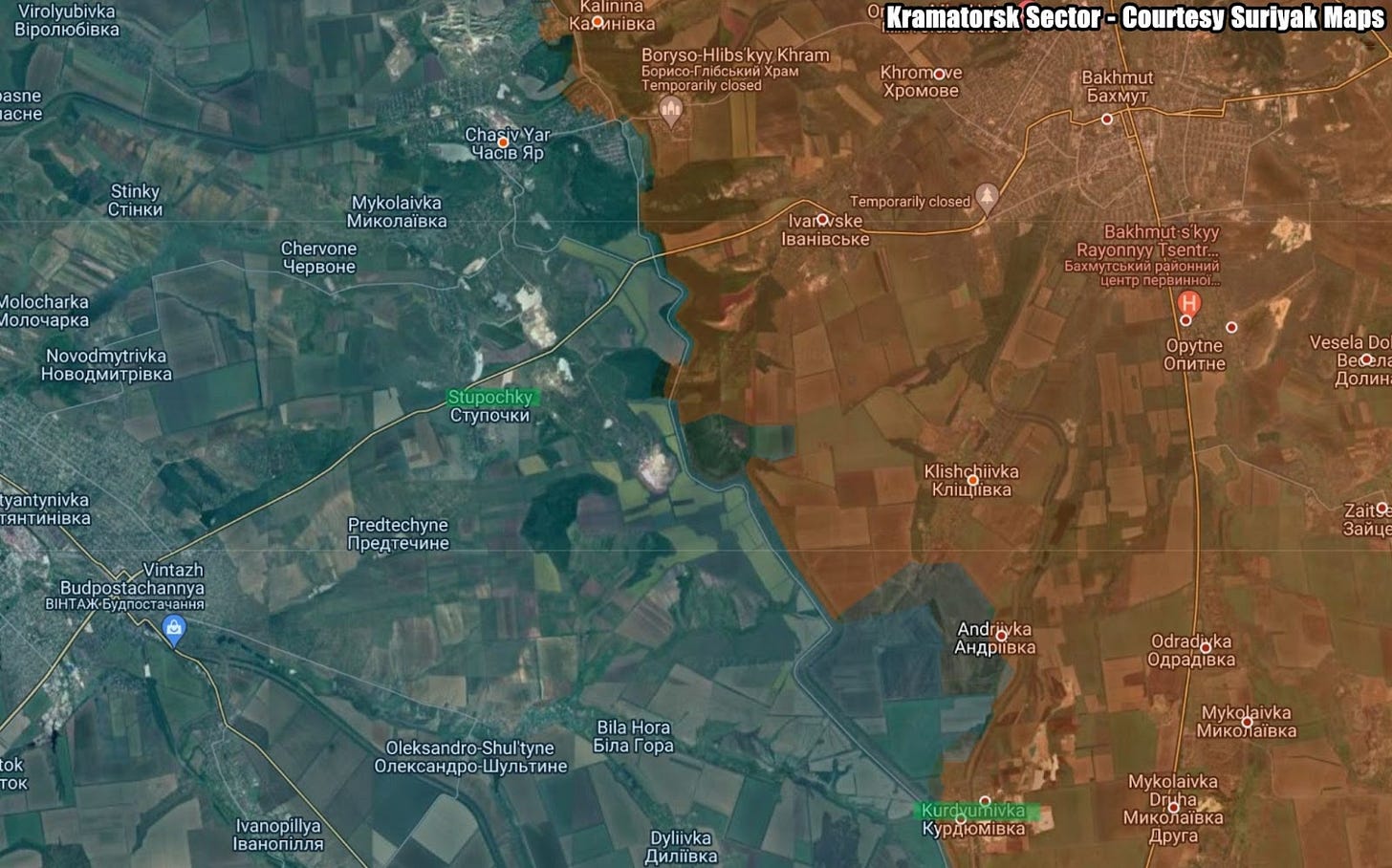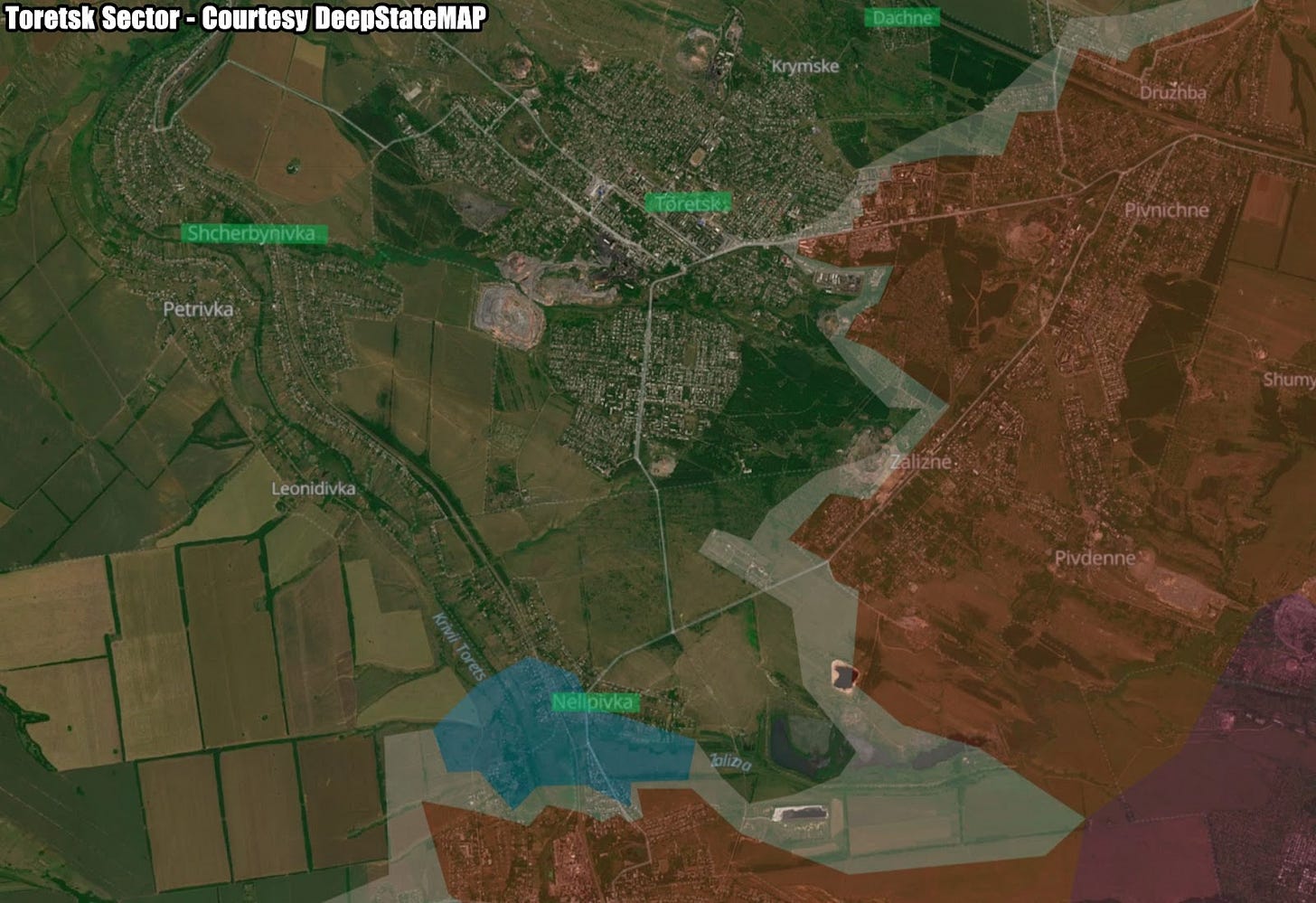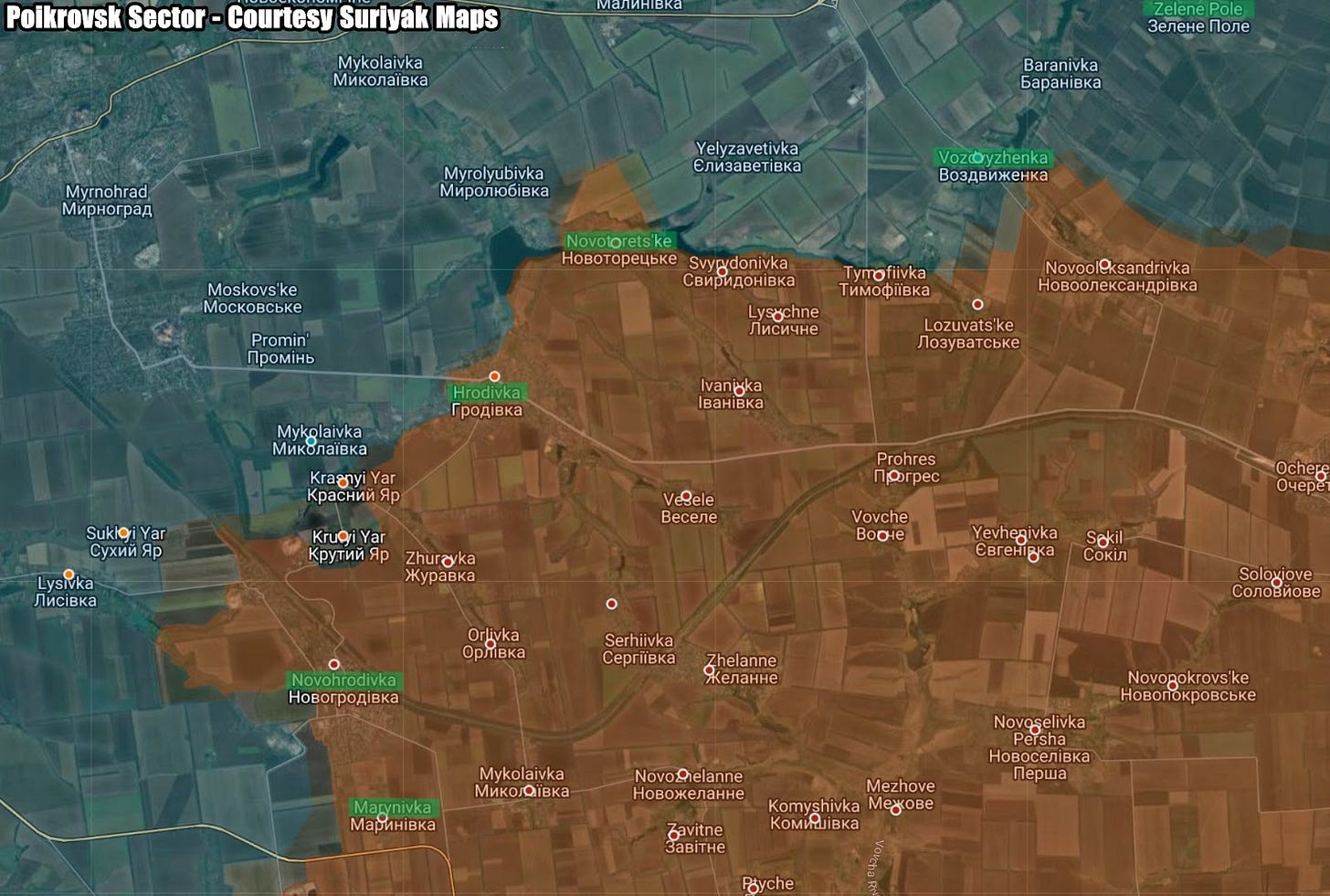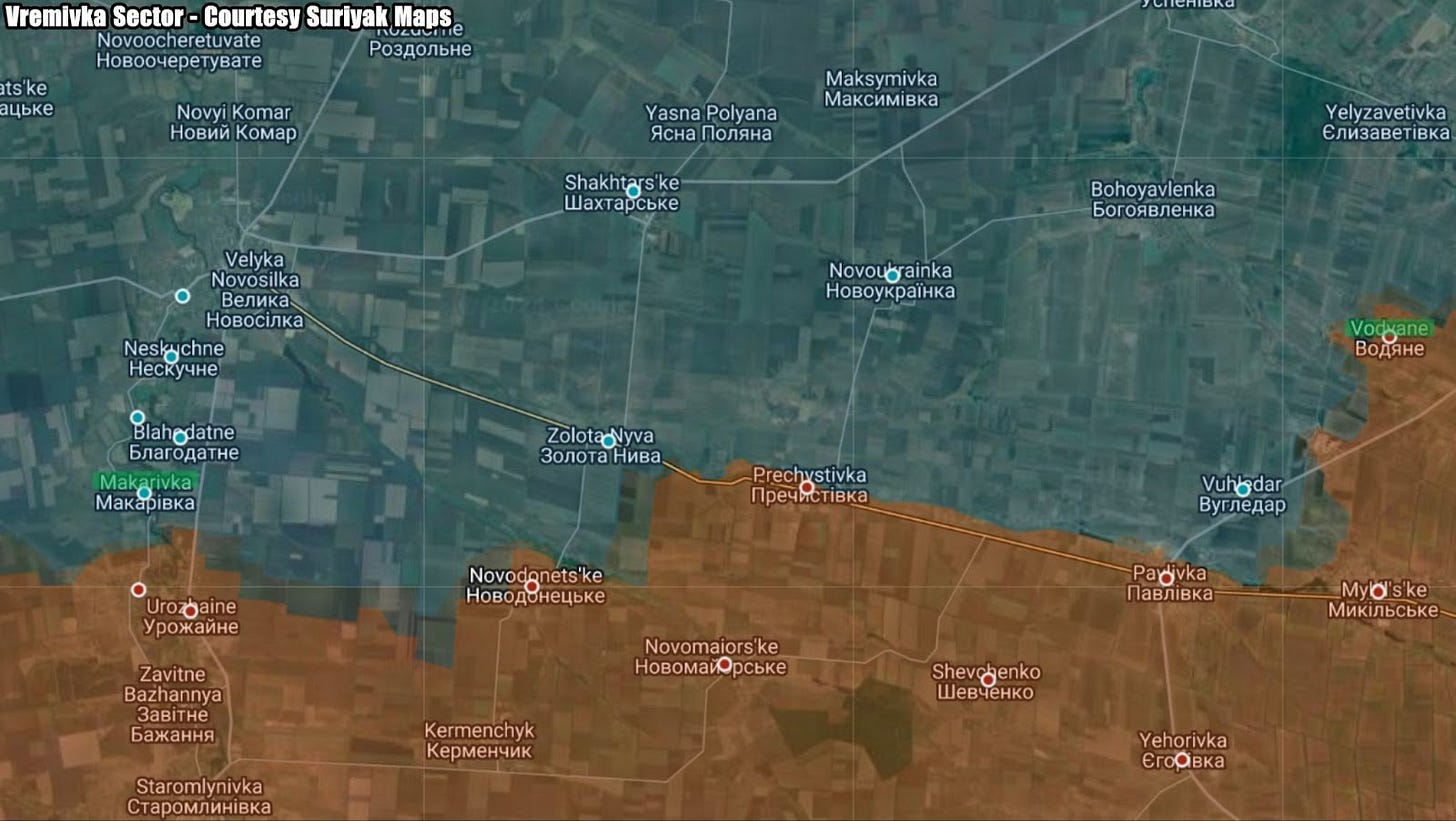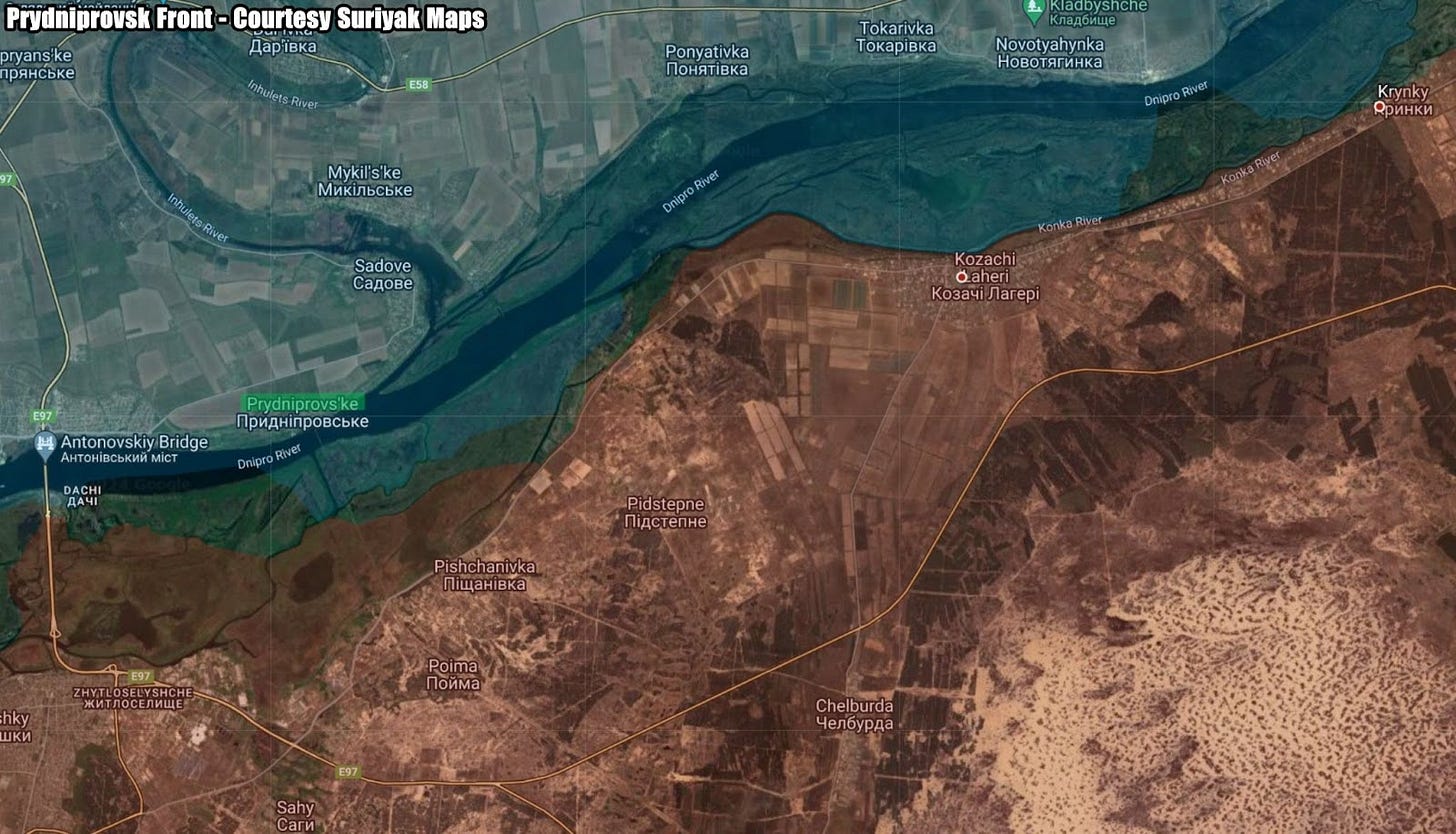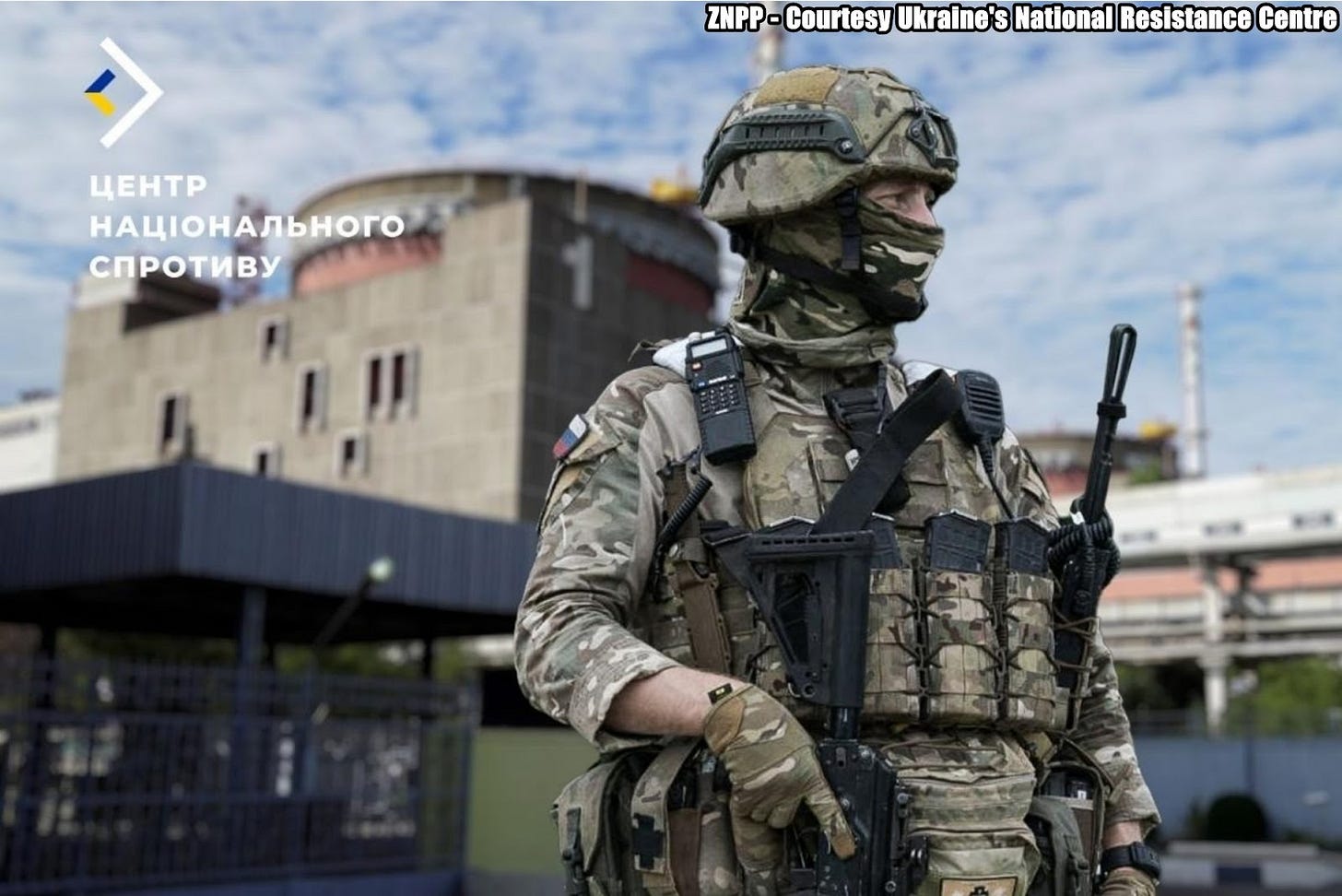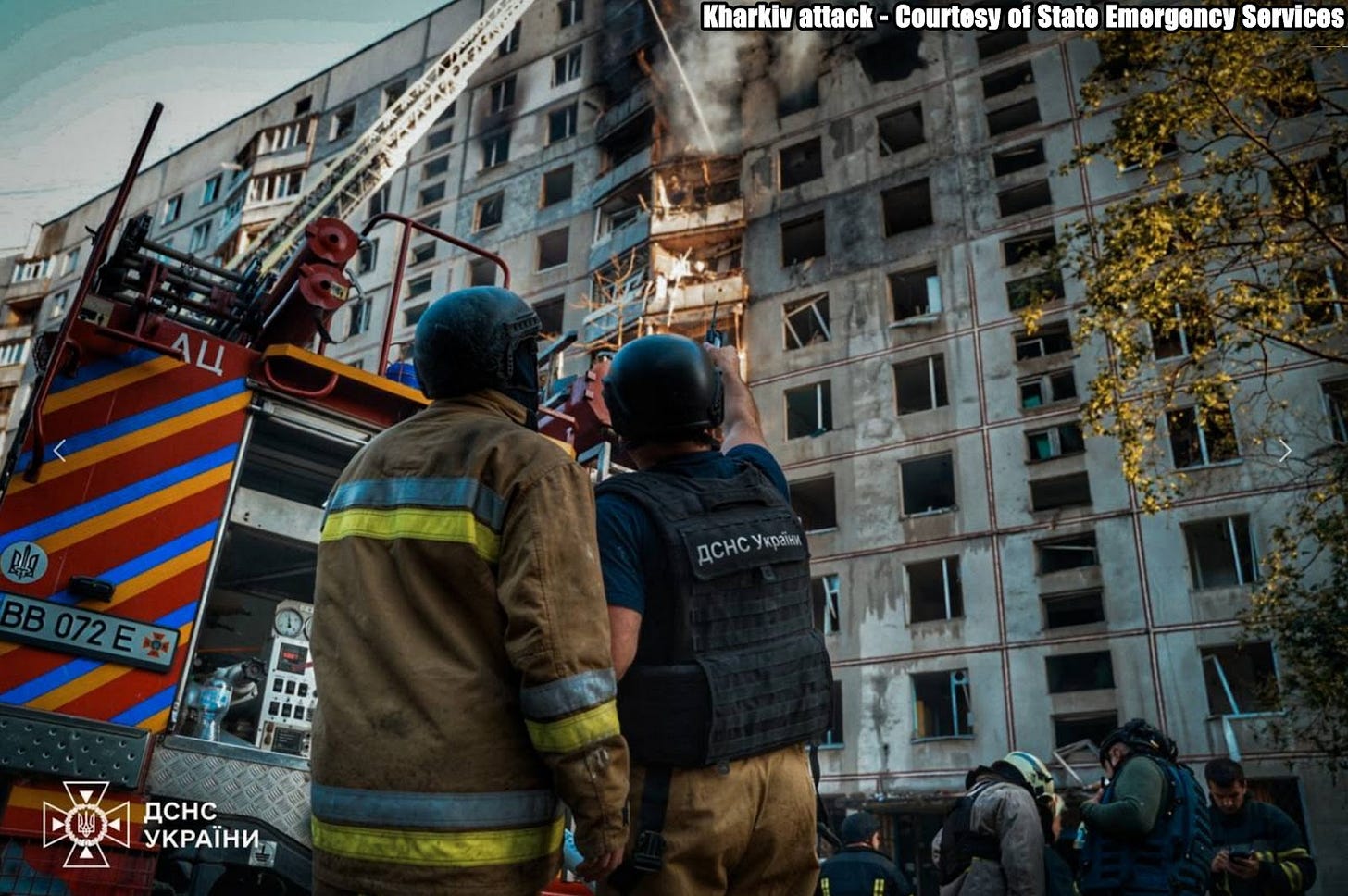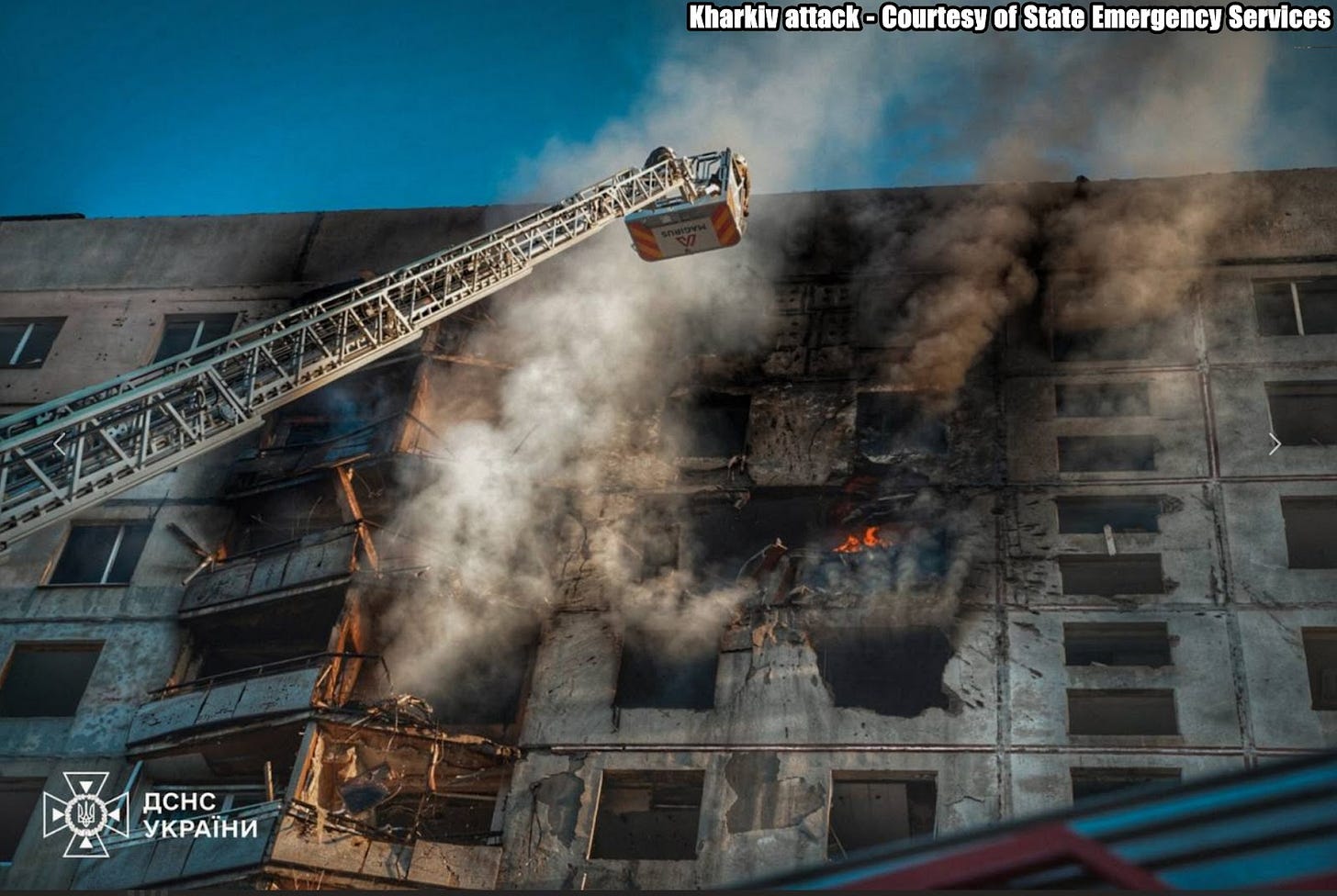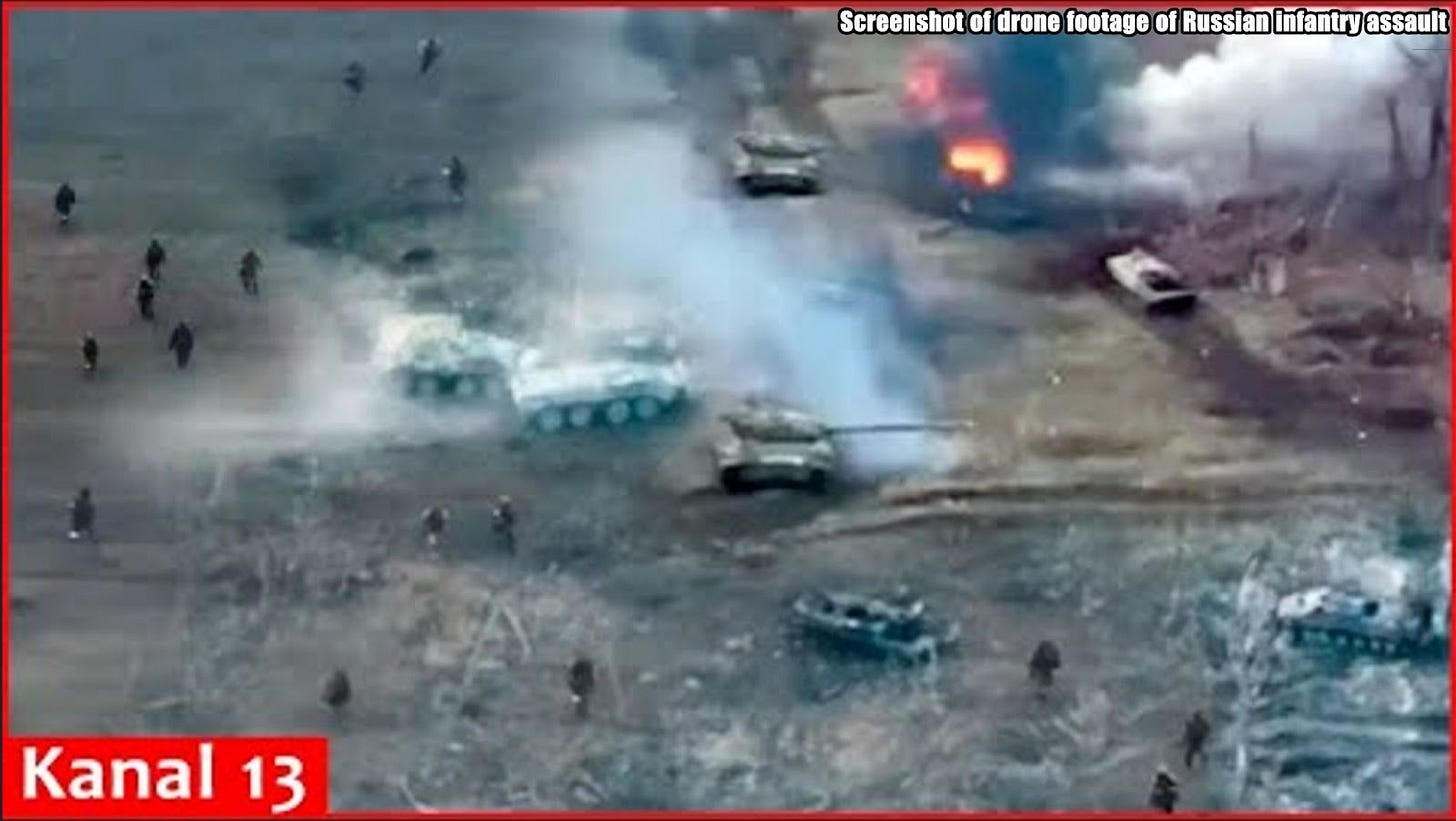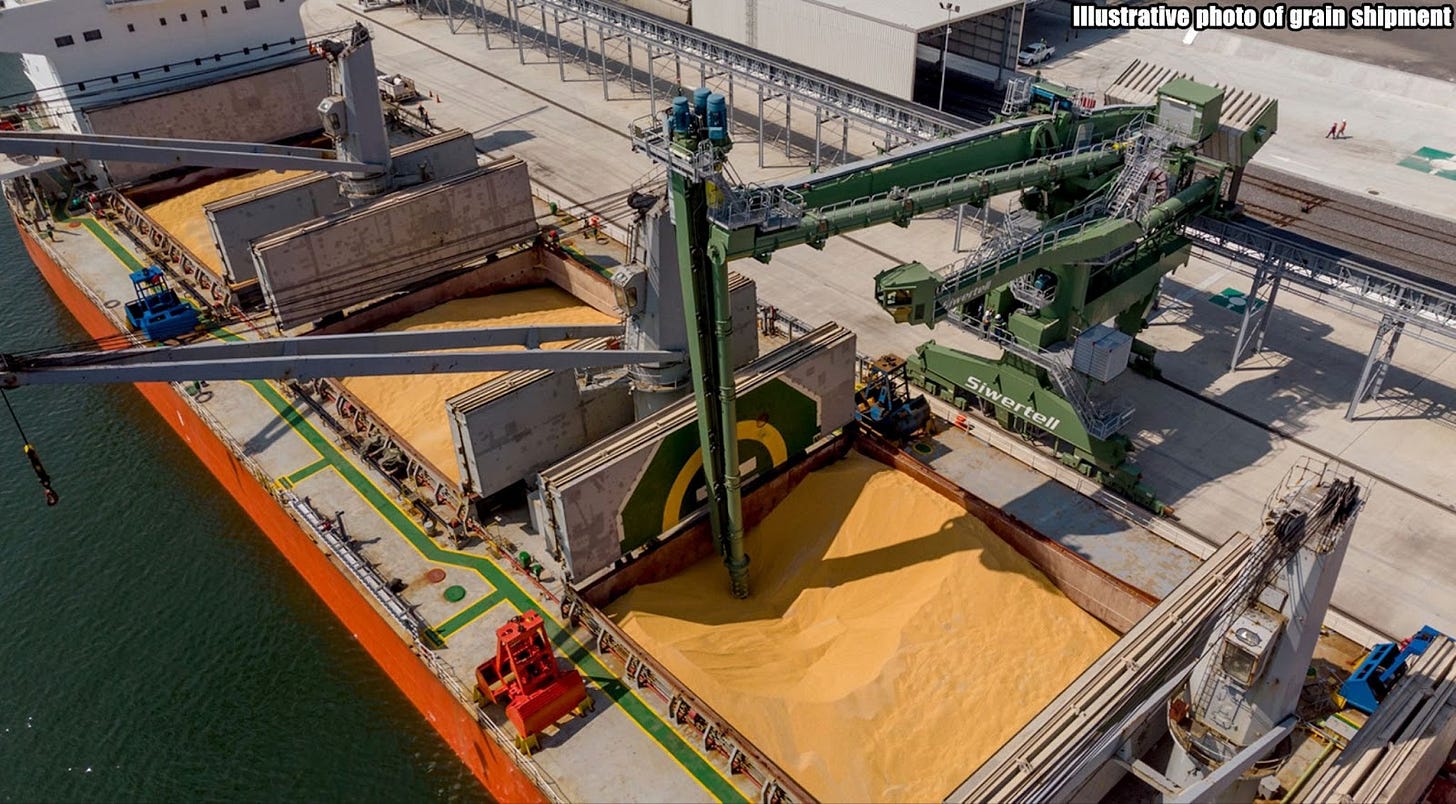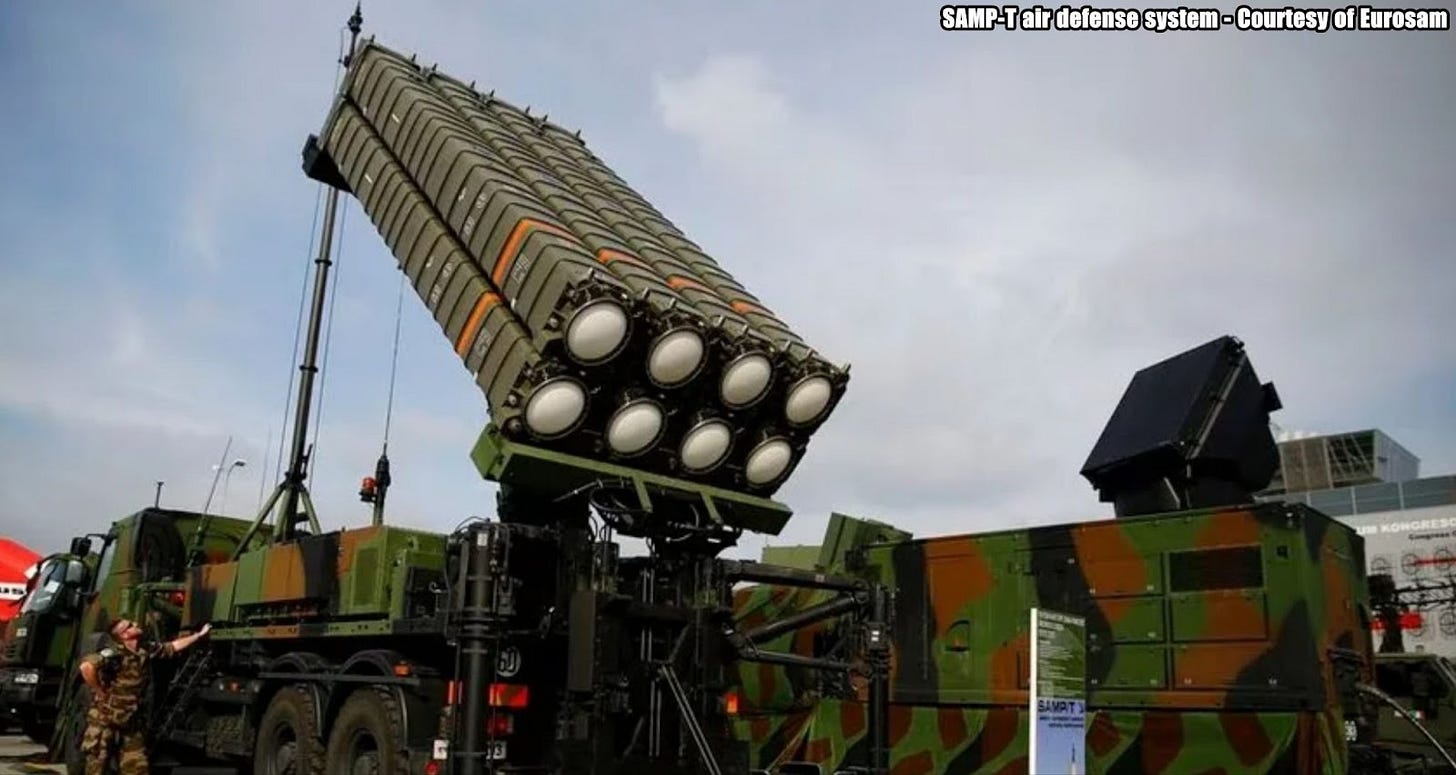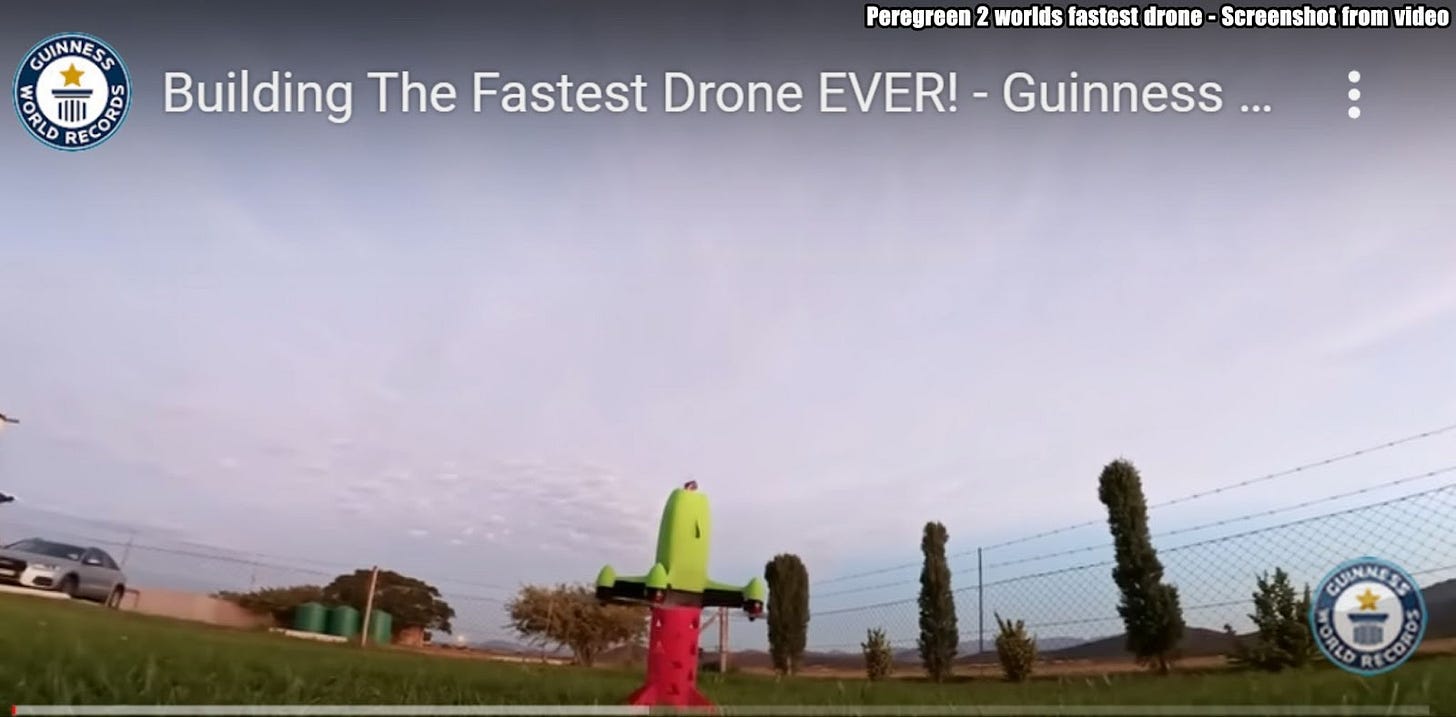Slava Ukraini! In early 2022 I began a Telegram channel aggregating news from a number of sources daily on the war in Ukraine. In June 2023 I began providing a daily draft for the Ukraine War Brief Podcast collecting news from over 70 sources daily, much of which formed the basis of the script. While the Podcast no longer exists I have continued to make this Brief available both on my own Substack and The People’s Media for those who wish to keep up with events on a daily basis.
All the latest news on the Russo-Ukraine War 6 days per week
ALONG THE CONTACT LINE
GSAFU Morning Report
The General Staff of the Armed Forces of Ukraine in its Operational Information update at 22:00 on Sep 15 stated that day 935 of the full-scale invasion of the Russian Federation against Ukraine was about to begin.
During the 48 hours, 131+137 = 268 combat engagements took place. Over the past 24 hours, the enemy carried out 63+56 = 119 air strikes, 580+428 = 1008 drone strikes and more than 3,300+2,800 = 6,100 artillery strikes across the positions of Ukrainian forces.
At the same time, Ukrainian soldiers continue to inflict losses in manpower and equipment on the occupying troops, exhausting the enemy along the entire front line and continue to disrupt the plans of Russian occupiers to advance deep into the territory of Ukraine.
-
Air Force Daily Report
On the night of September 15, 2024, radio engineering troops of the Air Force detected and escorted 17 enemy air attack vehicles. The occupiers hit Odesa with two Iskander-M ballistic missiles from the occupied Crimea and one Kh-59 guided air missile from the airspace of the TOT of the Zaporizhia Region, as well as 14 Shahed-type strike UAVs (launch areas: Kursk - Russian Federation. , Chauda - Crimea).
The enemy's air attack was repelled by anti-aircraft missile forces, mobile fire groups and units of the Defense Forces of Ukraine. As a result of the anti-aircraft battle, one Kh-59 guided air missile and 10 attack UAVs were shot down.
Anti-aircraft defense worked in Dnipropetrovsk, Sumy, Poltava and Mykolaiv regions.
-
On the night of September 16, 2024, the enemy attacked with "Shahed-131/136" type UAVs. From 20.00 on 15.09 to 06.00 on 16.09, the radio engineering troops of the Air Force detected and escorted 56 strike BplA (launches from Kursk and Yeisk - Russian Federation).
The main direction of the attack is Kyiv region. The air attack was repulsed by aviation, anti-aircraft missile forces, electronic warfare units and mobile fire groups of the Air Force and the Defense Forces of Ukraine.
As a result of anti-aircraft combat, 53 enemy attack UAVs were shot down in the Kyiv, Vinnytsia, Poltava, Sumy, Zaporizhzhya, Kirovohrad, Mykolaiv, Dnipropetrovsk, and Cherkasy regions.
Three more enemy drones were lost in location in several regions, previously without casualties or consequences.
The Russian Border Incursion
Both Ukrainian and Russian forces advance in separate areas of Kursk
The Institute for the Study of War (ISW), a US based think tank, in its Sep 15 Russian Offensive Campaign Assessment reported that Ukrainian forces reportedly advanced in Glushkovsky Raion, Kursk Oblast, and Russian forces reportedly recently recaptured territory in the area as of Sep 15. A Russian milblogger claimed on September 14 that Ukrainian forces advanced towards the southeastern outskirts of Volfino (southwest of Glushkovo).
Russian milbloggers claimed on September 15 that Russian forces recaptured Veseloye (southwest of Glushkovo), but ISW is unable to confirm this claim. Russian sources claimed that Ukrainian forces continued offensive operations on the southern outskirts of Veseloye and near Novy Put (south of Veseloye) and Medvezhye (southeast of Veseloye). Elements of the Russian 56th Airborne (VDV) Regiment (7th VDV Division) and 106th VDV Division reportedly continue to defend against Ukrainian attacks in Glushkovsky Raion.
Ukrainian forces continued offensive operations throughout their salient in Kursk Oblast on Sep 15. Russian sources claimed that Ukrainian forces continued attacks within and near Lyubimovka (southeast of Korenevo) and near Malaya Loknya (north of Sudzha) on Sep 14 and 15.
Russian forces recently advanced in the Ukrainian salient in Kursk Oblast and reportedly recently recaptured a settlement. Geolocated footage published on Sep 14 and 15 indicates that Russian forces advanced in fields east of 10-y Oktyabr (south of Korenevo) and marginally advanced west of Lyubimovka, respectively.
Russian sources claimed that elements of the Russian 382nd Battalion of the 810th Naval Infantry Brigade (Black Sea Fleet [BSF], Southern Military District [SMD]), "Arbat" Special Purpose Battalion, "Sarmat" battalion (Donetsk People's Republic [DNR] "Pyatnashka" international volunteer brigade), and "Dikaya Division of Donbass" (Russian Volunteer Corps) recaptured Borki (southeast of Sudzha). Elements of the Russian 51st VDV Regiment (106th VDV Division) are reportedly operating in Snagost (south of Korenevo), and elements of the 155th Naval Infantry Brigade (Pacific Fleet, Eastern Military District [EMD]) are reportedly striking Ukrainian forces near Darino (southeast of Korenevo).
The Khortytsia operational-strategic group
(Responsible for the northeastern part of Ukraine. )
Kharkiv Sector: Over the last day Ukrainian Defense Forces repelled 1 Russian attack near Vovchansk.
Kupyansk Sector: Russian Forces carried out several unsuccessful offensive actions against Ukrainian defensive positions near Synkivka, Petropavlivka, Hlushkivka, Kolisnykivka, Kruhlyakivka and Lozova.
Lyman Sector: Russian Forces carried out several offensive actions against Ukrainian defensive positions near Tverdokhlibove, Druzhelyubivka,, Makiivka, Nevske, Novosadove and Terny.
Siversk Sector: Russian forces carried out 12 unsuccessful assaults in the vicinity of Bilohorivka, Verkhnokamianske, Ivano-Darivka and Vyimka. 2 are still ongoing.
Kramatorsk Sector: Russian forces carried out unsuccessful offensive actions near Stupochky and Kurdyumivka The situation is under the control of the AFU.
Toretsk Sector: Russian forces carried out 11 unsuccessful offensive actions with air support near Dachne, Toretsk Shcherbynivka and Nelipivka.
The Tavria operational-strategic group
(Responsible for the central-eastern and southeastern part of Ukraine.)
Pokrovsk Sector : The enemy conducted 31 attacks against Ukrainian defences in this area over the last day in the vicinity of Zelene Pole, Vozdvyzhenko, Novotoretske, Hrodivka, Novohrodivka and Marynivka. 3 engagements are ongoing.
Kurakhove Sector: The situation in this area is quite serious. There were 34 combat clashes in the vicinity of Selydove, Ukrainsk, Hostre, Heorhiivka, Konstantinivka and Katerynivka. 3 engagements are ongoing.
Vremivka Sector: Russian forces, supported by aviation, made 8 assaults against Ukrainian positions near Makarivka and Vodyane. 5 attacks are ongoing.
Orikhiv Sector: There has been no significant change in the combat environment in the last 24 hours.
The Odesa operational-strategic group
(Responsible for Kherson, Qırım, (also known as Crimea) and the Black Sea.)
Prydniprovsk Sector: In this sector, over the last day, the situation has not changed significantly. Russian forces made 8 unsuccessful attempts to force Ukrainian units from their positions on the left bank of the Dnipro.
TEMPORARILY OCCUPIED TERRITORIES
Russia continues to store ammunition, deploy troops at Zaporizhzhia nuclear plant
Russian forces continue to use the territory of the occupied Zaporizhzhia Nuclear Power Plant to deploy military personnel and store ammunition and explosives, Ukraine's National Resistance Center reported on Sept. 15.
In a statement made less than two weeks after a visit by International Atomic Energy Agency (IAEA) director Rafael Grossi to the plant, the centre criticised the IAEA for supposedly ignoring the presence of the military contingent and arms.
The Zaporizhzhia Nuclear Power Plant, Europe's largest nuclear power station, has been under Russian occupation since March 2022. Its position near the front line has led to heightened nuclear safety risks throughout Russia's full-scale war.
The facility houses Russia's National Guard units, totaling 1,300 people, the centre said, citing data from Ukrainian citizens on the ground.
The Akhmat-Grozny mobile special-purpose unit and special rapid response unit Agat were identified among the personnel stationed at the facility, according to the centre run by Ukraine's special forces.
As a disguise, some Russian troops allegedly wear the uniform of the plant's paramilitary guard rather than of the Russian National Guard.
THE HOME FRONT
Russian bomb strikes Kharkiv apartment building, one dead, 42 injured
A Russian-guided bomb struck a multi-storey apartment building on Sunday in Kharkiv, Ukraine's second-largest city, triggering a fire and killing one person and injuring 42, officials said. Reuters reports.
President Volodymyr Zelenskyy said the latest attack underscored the need for Ukraine's Western partners to provide weapons and air defence systems and permission to use weaponry on targets deep inside Russia to save lives.
Prosecutors in Kharkiv region in northeastern Ukraine said on Telegram that the body of a 94-year-old woman had been recovered from the ninth floor of the building.
Kharkiv Mayor Ihor Terekhov said the fire sparked by the bomb had been extinguished. He put the injury toll at 42, including three children. Regional Governor Oleh Syniehubov had earlier said residents could be under the rubble.
Syniehubov posted photos of heavy damage to the top four or five storeys of the building, with smoke and fire billowing out of blown-out windows.
Zelenskyy, in his nightly video address, said three other guided bombs had struck villages in Kharkiv region, where population centres have been a frequent target of Russian attacks near the Russian border.
Russia did not immediately respond to a request for comment on the apartment building incident but has denied intentionally targeting civilians despite having killed thousands of them since it invaded Ukraine in 2022.
Zelenskyy called for rapid decisions on long-range strikes "in order to destroy Russian military aviation right where it is based. These are obvious, logical decisions.
"Every Russian strike of this nature, every instance of Russian terror, like today in Kharkiv...this proves that there must be long-range capability and it must be sufficient."
He said appropriate decisions were expected in the first instance from the United States, France, Germany and Italy, "those whose decisiveness can help save lives."
RUSSIAN WORLD
Some Russia commanders continue to employ wasteful infantry frontal assaults
The Institute for the Study of War (ISW), a US based think tank, in its Sep 14 Russian Offensive Campaign Assessment stated that some Russian field commanders continue to make decisions that degrade the overall quality of their subordinate forces—prioritizing infantry-led frontal assault tactics over cultivating technical specialists who would allow the Russian military to better field technologies and innovations in combat operations.
Various Russian milbloggers reported on September 13 that two drone operators from the 87th Motorized Rifle Regiment of the 1st "Slavic" Motorized Rifle Brigade (51st Combined Arms Army [CAA], formerly the 1st Donetsk People's Republic Army Corps [DNR AC]) died in combat near Pokrovsk after their field commander forced them into an assault detachment as punishment for criticizing their command. The two drone operators posted footage explaining the situation and their forced reassignment to assault tasks before their deaths, which milbloggers widely amplified. Several milbloggers claimed to have heard numerous similar stories and claimed that the practice of sending specialists, such as electronic warfare (EW) specialists, snipers, machine gunners, and drone operators, to conduct frontal assaults as punishment for dissent is commonplace, particularly amongst units of the 51st CAA.
DNR First Deputy Information Minister Danil Bezsonov claimed that the commander of the "Komendant" naval Spetsnaz group, which was operating in Kherson Oblast, similarly divided his subordinates into assault groups based on personal vendettas and that a commander operating in Donetsk Oblast sent a talented cyberhacker to an assault unit for disagreeing with the command, after which the hacker died in combat.
Milbloggers argued that this practice is indicative of poor command discipline and is degrading the quality of Russian forces. ISW has previously noted that the Russian military command's reliance on infantry-led frontal assault tactics has flattened the distinctions between formerly elite (such as Airborne and Naval Infantry forces) and ordinary Russian combat services and degraded Russian combat capability throughout the frontline.
Reports of Russian commanders forcing personnel with more technical specialties to conduct such frontal assaults are consistent with this wider observed pattern. Machine gunners and snipers are not necessarily specialists in a technical sense, but they possess unique skills that accomplish different effects than foot-mobile infantry conducting a frontal assault against a tactical objective. By using specialists of any variety as additional bodies for frontal assaults, the Russian command is forgoing the opportunity to properly leverage whatever specialties they could integrate into their respective units, further illustrating that most Russian frontline troops have been reduced to understrength and low-quality motorized rifle units. The use of specialists who are familiar with more advanced battlefield technologies, such as drones and EW systems, is likely compounding these effects. While Ukrainian forces have consistently displayed high degrees of tactical and technical innovation, the Russian military appears to be willfully undermining its own ability to integrate innovations into combat operations.
Putin decrees expansion of Russian armed forces.
Russian leader Vladimir Putin has issued a decree increasing the number of personnel in the Russian armed forces to 2,389,130, including 1,500,000 military personnel. Various Russian propaganda sources report.
"I hereby decree: The number of staff in the Armed Forces of the Russian Federation shall be set at 2,389,130, including 1,500,000 military personnel."
The Kremlin leader has ordered the government to allocate sufficient funds from the budget to the Defence Ministry to implement the decree. This means that Putin has increased the armed forces' staff by 180,000 people.
Putin last expanded the Russian armed forces in December 2023, bringing the total number of personnel to 1.32 million. Prior to Russia's full-scale invasion of Ukraine in 2022, the number was just over 1 million.
The Russian Defence Ministry has not yet commented on Putin's new decree.
Following the decree issued in December 2023, the ministry stated that the increase in the size of the Armed Forces would come from "citizens who wish to serve under contract", with no significant increase in conscription for regular military service and no plans for mobilisation.
Grumpy Here - It is unclear if Russia ever reached their 2023 goal of 1.32 million. They used a number of means including recruiting workers from overseas and tricking them into joining the army, plus threatening migrants with deportation for them and their families if they didn’t join the army.
Russia already has a serious industrial manpower shortage, it is doubtful that the defence industry could reach its production goals if the manpower pool shrinks further.
If you consider the ISW article above regarding Russian commanders' callous wastage of personal at the front you can clearly see that Russia has a serious dilemma.
Russia makes at least billion dollars on stolen Ukrainian grain
Since 2022, Russia and its partners have sold nearly one billion dollars worth of grain stolen from the occupied territories of Ukraine. The Wall Street Journal reports.
This "business" has a wide network of clients, which includes the firms responsible for the Russian invasion of Ukraine, as well as a company linked to the Iranian Revolutionary Guard, Crimean businessman Mykhailo Hanaga, who cooperates with Syria and Israel through his company Agro-Fregat LLC, and a company that trades with the UAE.
In the first half of 2024, Russians sent 15 ships with 81,000 tonnes of wheat to Türkiye from Mariupol. The Turkish authorities say they have banned ships from the occupied Ukrainian terminals and are cooperating with Kyiv to block illegal trade.
It is noted that the exact commercial value of the stolen agricultural products is difficult to determine. However, Ukrainian Deputy Agriculture Minister Dmytrasevych reported that since 2022, at least 4 million tonnes of grain from the occupied part of Ukraine have been sold on international markets, which is worth about US$800 million.
The sale of loot helps Russia cope with the economic pressure of sanctions. In this way, the loot stolen during the war helps it finance the war itself.
Most of the stolen goods were reportedly exported by small ships or by land. The total value of the grain stolen by the Russians could reach US$6.4 billion.
The complicity in this takes many forms. The US government notes that three of the ships exporting large volumes of illegal grain are owned through a network of corporate entities by the Russian state-owned United Shipbuilding Corporation, which also produced the warships used to fire on Ukraine.
A Russian company that sells grain from the occupied part of Zaporizhzhia Oblast donated US$111,000 to the Russian battalion.
In June, Ukrainian prosecutor Ihor Ponochovnyi began monitoring the Turkish vessel Usko MFU, which he suspects was transporting stolen grain last year from the port of Sevastopol. In November, this vessel transported 2,100 tonnes of crushed sunflower and brown wheat seeds to Türkiye with a potential value of US$500,000.
NEWS WORLDWIDE
Ukraine to receive another batch of Danish F-16s this year
The Danish government promised to transfer another batch of F-16 fighter jets to Ukraine later this year, the DR broadcaster reported on Sept. 15, citing Danish Defense Minister Troels Lund Poulsen.
"Denmark will deliver an additional contribution of F-16 aircraft in the second half of 2024," Poulsen said in a comment to the Ritzau news agency after his visit to Kyiv.
Ukraine received its first U.S.-made fourth-generation jets in late July, one year after Denmark, the Netherlands, and other foreign partners launched the fighter jet coalition for Kyiv.
Danish Prime Minister Mette Frederiksen confirmed on Aug. 31 that these initial F-16s included aircraft from Denmark, while earlier reports suggested that the first batch was comprised of Dutch planes.
Kyiv has already deployed F-16s to intercept Russian mass aerial attacks. One aircraft crashed during such a mission, marking Ukraine's first F-16 loss.
Copenhagen has pledged to deliver 19 aircraft to Ukraine in total but did not disclose how many had already been provided. Poulsen did not name the size of the second batch either "for the sake of operational security."
Ukraine was also promised 24 F-16s by the Netherlands, six by Norway, and 30 by Belgium. President Volodymyr Zelenskyy said his country needs at least 128 F-16s to successfully counter Russian air power.
Italy to send second SAMP-T air defence system to Ukraine for ‘protection of population’
Italy will soon provide Ukraine with a second SAMP-T air defence battery. “We have given Kyiv unconditional assistance—military, civil, and financial. Now, we are about to send a second Samp-T battery to protect the Ukrainian population,” Italian Foreign Minister Antonio Tajani said. New Voice reported.
Tajani noted that Ukraine has never requested more than what Italy is already providing. He also emphasised that Italy does not possess the British and American weapons that Ukraine needs.
The minister expressed hope that by the end of 2024, a “significant peace conference” on Ukraine could be organised.
In June, Tajani announced that Italy would deliver the SAMP-T system to Ukraine as part of its ninth military aid package.
MILITARY & TECH
Ukrainian experimental interceptor drone hits 325 km/h
For anti-aircraft drones, a very important parameter is speed in order to catch up with the target, but the question is what values can be achieved and whether it will be enough? Defense Express reports
The Wild Hornets Ukrainian drone developer group shared footage, showing a significant breakthrough in interceptor drone technology, with their latest FPV (First Person View) drone accelerating to 325 km/h in the matter of seconds. The short clip was recorded from the drone’s on-board camera.
Note that the higher the speed, the more efficient the anti-aircraft FPV drone is, because its operator has a very limited time to intercept its target, which must first be caught. At the same time, the cruising speed of such UAV as "Orlan-10" is about 110 km/h, and the maximum - 150 km/h
At the same time, each system has its own maximum and quadcopters also have a "glass ceiling" of their maximum speed. And to do this, it is possible to follow the current speed record for quadcopters. And as of September 2024, the smartest drone in the world - Peregreen 2, which reached a speed of 480.23 km/h. This record was set in April 2024 this year by Luke and Mike Bella (Father and Son) from the South African Republic.
As you can see, aerodynamics are already very important at such speeds, so the drone resembles a rocket. At the same time, such a decision is not "know-how", in particular in January 2023, the record in 414 km/year belonged to the XLR V3, which was created by Ryan Lademann. And the first drones according to this scheme, enthusiasts began to collect in years 7-8 ago, reaching a speed of 270 km/h
Volodymyr Zelenskyy adds Unmanned Systems Forces to Ukrainian Armed Forces structure
Ukrainian President Volodymyr Zelenskyy signed Law No. 11507, establishing the Forces of Unmanned Systems in the Ukrainian Armed Forces on Sept. 16. New Voice reports.
The draft law aimed to boost the Ukrainian Armed Forces' capabilities with unmanned and robotic systems for air, sea, and land use, according to the explanatory note. On Sept. 16, the document was returned to the Verkhovna Rada with President Volodymyr Zelenskyy's signature.
The new Forces of Unmanned Systems, the first military unit globally to utilise various unmanned systems, include air, sea, and land components.
Zelenskyy first called for this unit in a decree on Feb. 6, and Colonel Vadym Sukharevskyi was appointed commander on June 10. Sukharevskyi reported on Sept. 6 that the use of FPV drones in combat increased by 25% in Aug. compared to June.
That’s it for today’s Draft folks if you would like to keep up with events in Ukraine daily please consider subscribing, its free!
Feel free to share this update with your friends. Heroyam Slava!







